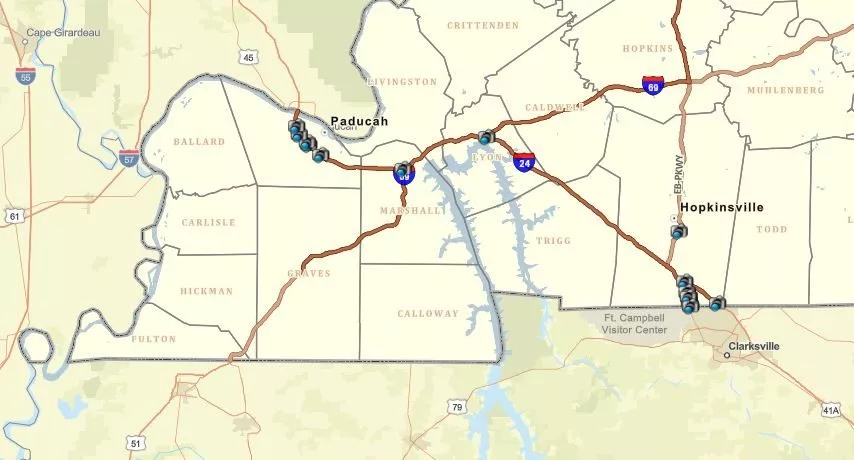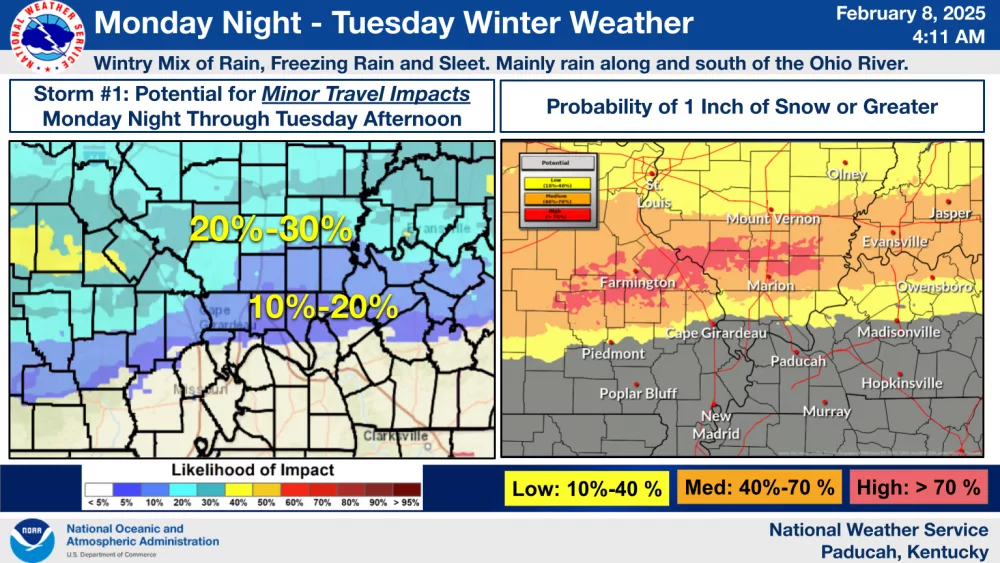
To most of us, all ants look pretty much alike. However, dozens of different species of ants may be found within homes, each having unique characteristics which may influence the method of control. They are the most frequent and persistent pests encountered around homes and buildings. Throughout Kentucky, the most common household-invading ants include pavement ants, carpenter ants, acrobat ants, and odorous house ants. The odorous house ant has become a huge problem lately in homes.
Knowing which ant or ants you have often requires help with identification. Ants placed in a container with rubbing alcohol can be brought to the University of Kentucky Cooperative Extension Office for identification.
The common mistake made when attempting to control ants is only spraying the ones present. The ants seen foraging over exposed surfaces is only a small portion of the colony. Typically, there will be thousands of additional ants, including one or more egg-laying queens hidden somewhere in a nest. The importance of eliminating queens and other colony members within nests cannot be overstated and is the key to effective ant control.
Buildings contain many favorable hiding and nesting sites for ants. Preferred sites include spaces behind walls, cabinets, or appliances; behind window and door frames; or beneath floors and concrete slabs. Most of these areas are hidden, making it difficult to determine their precise location. When the location of the nest or nests cannot be determined or are inaccessible, insecticide baits are the preferred solution. The advantage in using baits is that foraging ants take the insecticide back to the nest and feed it to the queen or queens and other members of the colony. In time the colony is destroyed.
When using baits, place them wherever ants are seen, preferably along ant “trails”, which worker ants follow between food and the nest. Do not spray other insecticides or cleaning agents around the baited locations as this will keep ants from feeding on the bait. Initially the number of ants around the bait station will increase. This indicates that the ants are feeding on the bait and transporting the insecticide back to the nest. Hopefully, ant activity will subside in a matter of days as the number of ants in the colony declines. Continue to place other baits wherever ants are seen.
Ants are rather finicky in their food preferences and may alter them throughout the year. If one type of bait isn’t attractive, try another. Optimal results usually require a sustained period of feeding, not just a brief visitation by a few ants. Retail baits usually will not control carpenter ants.
The odorous house ant has become the most common and difficult ant to control in Kentucky. This ant is small, dark in color, and forms distinct trails along floors, countertops, sidewalks, foundation walls, etc.
The odorous house ant is often mistaken for the pavement ant, which is easily controlled with most baits. The most accurate diagnostic difference is the absence of a noticeable “bump” or node along the constricted area between thorax and abdomen. Pavement ants have two obvious nodes and fine grooves or striations along the head and thorax. A good quality hand lens, or ideally a microscope, is needed to see these characteristics.
In addition, pavement ants are more likely to “kick out” bits of dirt or debris from their typical nesting location under slabs or along walls. Odorous house ants give off a rotten coconut or pine-like scent when crushed.
Odorous house ant colonies can be large, numbering in the tens of thousands, with multiple nesting sites in just about every imaginable location. The ants commonly nest outdoors under pavement, rocks, mulch, woodpiles, flower pots, and siding, and forage indoors for food and moisture. Nests may also occur behind brick veneer or indoors within wall voids, potted plants, appliances, and especially near sources of moisture.
Odorous house ant nests tend to be mobile. The colonies relocate fast and often in response to changes in weather, disturbance and other factors. Colonies usually have multiple, egg-laying queens, and the primary colonies may split into smaller ones for no apparent reason. Ants foraging indoors feed on all manner of foods ranging from the trash can to the cereal bowl, but generally prefer sweets.
This particular ant is very difficult to control, especially by householders. The better baits to try are often the sweet ones. Activity indoors can sometimes be alleviated by eliminating ready food sources such as spillage or pet food dishes. Sealing obvious ant entry points may also be helpful, along with trimming back shrubs and limbs that afford untreated ‘bridges’ to the building. In nature, this ant feeds extensively on plant nectar and honeydew excreted by plant-sucking insects such as aphids.
Ant control in buildings can be frustrating. Repeated attempts are often needed to eradicate or at least maintain them at tolerable levels. When trying to control odorous house ants, you may need to call a professional.





